Chartbook 282 $61 billion is not enough. Why the Biden administration needs a ceasefire strategy in Ukraine.
There is a nervous tone about reports from Ukraine in the last few weeks, suggesting that the war may be entering a new and dangerous phase. In light of the Congressional vote for $61 billion in aid, this may come as a surprise. But the grim assessments of the war, reflect facts on the ground. Those facts demand that the Biden administration go beyond aid to developing a ceasefire strategy.
Despite all the hoopla around Ukraine’s offensive successes in September of 2022, as is explained in this excellent piece by Franz-Stefan Gady the logic of the war in Ukraine has been, from the start, relentlessly attritional. Russia’s initial onslaught was hopelessly undersized and relied on the assumption that they would be able to break Ukrainian resistant with a coup de main. When that failed, after the initial Russian assault had spent its energy, frantic mobilization actually conferred material advantage on Ukraine along key segments of the frontline. Numerical superiority at the point of attack largely accounts for Ukraine’s remarkable breakthroughs in the North East in September 2022. But that momentum only carried so far. In 2023 Russia’s mobilization efforts counterbalanced the Ukrainian push, the result was the frustration of Ukraine’s summer offensive operations in 2023. Since the summer of 2023, difficulties in raising the pace of Ukrainian mobilization and significant Russian efforts, have conferred the advantage decisively on Putin’s forces. It is hard to see how Ukraine can hope to overcome this difference, given its smaller population, its vastly smaller economy - at the start of the war the ratio was more than 10:1, it is now far worse - and the limited aid that the US or the EU are willing and able to supply. Predicting the future is uncertain. But the likelihood is that the balance will tip further against Ukraine. The ultimate choice must lie with Kyiv and the Ukrainian people. But for outsiders, notably the EU and the USA to avoid the obvious conclusion, is cowardly and irresponsible. They should be formulating a ceasefire strategy.
Over the winter of 2022-2023 foreign aid was enough to allow Ukraine to achieve a degree of economic and military stabilization, but, since Q1 2023, aid from both the US and Europe has been on a downgrade.
Source: Kiel
By early 2024, before the new promise of US aid arrived, Ukraine was under pressure on every front.
On the battlefield its troops were outnumbered and outgunned with Russia enjoying huge advantage in artillery fires, estimated in the worst cases to be 10-20:1.
As Russia developed its aerial attack - with intensified drone waves, showers of ballistic missiles and improvised glide bombs - Ukraine’s air defenses frayed. Crucially, this exposed Ukraine’s power infrastructure to crippling Russian attack. On March 22, March 29, April 11, and April 27 2024 Russia conducted dramatic attacks on Ukraine’s power system.
On April 11, Russia destroy(ed) the Trypillia thermal power plant, the largest such plant near Kyiv, with a missile strike. Missile attacks in recent weeks have almost completely destroyed Ukraine's thermal power generation and have also severely damaged some Ukrainian hydroelectric power plants, such as the Dnipro hydroelectric power station. Ukraine's power grid currently relies almost entirely on nuclear power plants, which are also supported by wind and solar power plants — although the latter's production is heavily dependent on weather conditions.
Data on electricity consumption in Ukraine has disappeared from public access since the start of the full-scale invasion, but trends in the energy sector can be assessed using net electricity exports — that is, the extent to which Ukraine exports more electricity than it imports. Electricity imports from all of Ukraine's neighboring countries (except Belarus and Russia, with which Ukraine has no connection) have repeatedly become a lifeline for the country. After the recent intensification of Russian attacks, Ukraine has been forced to import extremely large amounts of electricity on some days. Consumption traditionally drops in Spring due to better weather, and under normal circumstances, Ukraine would be exporting electricity.
Source: Kyiv Independent
Ukraine can try to rebuild its power infrastructure, but
““this will be "futile" without more air defense, Andrii Hota, the chair of Ukraine's state energy company Centerenergo's supervisory board, told Voice of America on April 11. … Kyiv has been urging allies to provide Ukraine with more air defenses, in particular, with U.S.-made Patriot systems that can intercept ballistic missiles. According to President Volodymyr Zelensky, Ukraine needs 25 Patriots to cover the country completely, but Foreign Minister Dmytro Kuleba said he is initially focused on securing seven.”
Source: Kyiv Independent
A single Patriot battery costs in excess of $1 billion. So these are not modest demands.
Adding to Ukraine’s difficulties on the battlefield and in the air, in early 2024 as they waited for Congress to decide on the aid package, financial officials in Kyiv were holding their breath. To tide it over, month by month, and to preserve financial stability, Ukraine needs in the order of $3.5 billion in external foreign funding. Otherwise, it has to resort to the central bank and to tap scarce foreign exchange reserves. As the Kyiv Independent commented gloomily in March 2024:
In January, Ukraine received only $400 million from Japan; in February, $800 million was disbursed by Japan, Norway, and Spain. While the outlook for the next few months looks more positive due to the approval of the EU aid and the expected disbursement of the first tranche of 4.5-billion-tranche in March, the experience of the first two months of the year raises the uncomfortable questions of how Ukraine will be able to finance its huge expenditures if the support stops.
Source: Kyiv Independent
Source: Kyiv Independent
Against this backdrop, the Congressional haggling over the $61 billion aid slice for Ukraine was truly nerve-wracking and the final resolution on April 26th came as a huge relief.
On the news from Washington, Ukraine’s central bank responded by cutting interest rates by a full percentage point to 13.5%, a larger cut than expected, reflecting the new influx of aid, lower inflation and the reduced prospect of the central bank being called upon to monetize the financial burden of the war effort, as it had done in 2022.
Ukraine’s finance chief said a $61 billion US aid package helps cover budget gaps for this year, … Finance Minister Serhiy Marchenko said that $7.8 billion of the funding approved Wednesday by President Joe Biden will be earmarked for budget needs. …The influx of US aid will offer an immediate boost to Ukraine’s budget, with funds earmarked for fiscal needs such as salaries for teachers, social and humanitarian expenses and the war-battered nation’s health-care facilities, Marchenko said. The ministry had to increase defense spending by $4 billion in the first quarter, according to the minister.
Source: Bloomberg
But, welcome as this was in Kyiv, neither in the short-run nor in the long-run does the US aid package resolve Ukraine’s problems.
In the short-run it will take months for major aid deliveries to arrive. In the interim the Russians have every incentive to intensify their assaults. In the long-run the amounts of money and material being delivered by the West are insufficient to redress the huge imbalance between Ukraine and Russia.
What this means is that Ukraine will stand against the Russian onslaught of the coming months without a new and brighter long-term horizon. In the grinding battles for the Donbas around Chasiv Yar, in the effort to keep Russian artillery out of range of Kharkiv and in the daily struggle to shoot drones and missiles out of the sky, survival will be the only real goal.
In light of these stark facts, for Biden’s National Security Advisor Jake Sullivan to be talking about the prospect of a new Ukrainian counteroffensive in 2025, seems like whistling in the dark.
Even were money to be found, for the next few years it is not clear how much weaponry and ammunition the West can actually deliver. The Keynesian quip that we can afford anything we can actually do, takes on a different taste when you realize the limits of current productive capacity.
As Foreign Policy reported:
Ukraine is still likely to be outgunned by Russian artillery for much of the rest of 2024 despite Congress nearing the passage of a $60 billion military aid bill for Kyiv, officials and analysts told Foreign Policy … For months, Ukrainian troops have been firing about 2,000 rounds a day, barely enough to sustain a defensive war against the Russians. And even with the approval of new U.S. aid, most factories have yet to ramp up production. “The problem is there is a huge shortage—worldwide—of artillery shells,” said Oleksandra Ustinova, a Ukrainian lawmaker. “The Europeans said they would provide us a million shells—they provided only 30 percent of those. The Americans have dried out their stocks, and they’re also delivering to Israel. And they are only ramping up the production line.” … the expectation is that the administration will spend much of the year rebuilding U.S. stockpiles to prewar levels as the U.S. Army aims to level up artillery production to 100,000 rounds per month by the end of 2025. Across the Atlantic Ocean, Europe’s stockpiles are empty. Most of the output from the European Union’s initiative to get 1.4 million shells into Ukrainian hands—about half of which have already been delivered—won’t get there until the end of 2024. …The Czech Republic appears to have sourced enough money from a consortium of European countries to buy 500,000 rounds of 155 mm artillery ammunition and is currently working on getting the first batch to Ukraine. … “I think it’s fair to assume that the Ukrainians for the next 12 months will be able to have a monthly fire rate of maybe roughly 75,000 to 85,000 [shells] per month, which boils down to something like 2,400 to 2,500 rounds per day,” … Gady said that is about the minimum amount that Ukraine needs to sustain a defensive war against the Russians. “That doesn’t leave any room for offensive operations this year,” Gady added. And congressional critics of U.S. aid to Ukraine—such as Sen. J.D. Vance, who argued in the New York Times this month that the United States simply doesn’t have “the capacity to manufacture the amount of weapons Ukraine needs us to supply to win the war”—are going to continue to make that case loudly. In the meantime, Russia is on track to produce 3.5 million rounds in 2024 and might be able to surge to produce 4.5 million rounds by the end of the year.
If the situation with ammunition is grim, Ukraine’s difficulty in mobilizing manpower is ultimately even more decisive. Whereas ammunition and weapons production will largely be determined outside the country. The question of mobilizing troops goes to the heart of Ukrainian society and politics.
Ukraine has 330,000 troops are estimated to be currently deployed on the battlefield. Only men aged 27 or older have been recruited, with those serving on the battlefield being on average 43. Ukraine has a smaller pool of millennials and Gen Zers compared with other nations, given a drop in birth rates after the collapse of the Soviet Union.
For the war effort in coming year the Ukrainian military can draw on a total pool of 500,000 men. But a proposal to lower the recruitment age to 25 sparked a fierce backlash from politicians who argue it would be suicidal for the nation to send its youngest into the trenches. It had to be forced through by presidential decree. A February survey by Info Sapiens, a Ukrainian social research organisation, found 48 per cent of men were not prepared to fight while 34 per cent were. The rest said it was hard to say.
Given this configuration of material forces, rather than talking loosely about new offensives in 2025, we must surely ask what is American and Western strategy in Ukraine aiming to achieve, beyond backing the Zelensky government?
In a remarkable interview with Ezra Klein, in March 2024 Richard Haass - for 20 years the President of the Council of Foreign Relations - insisted that it was time for the US finally to formulate what he called an “independent” policy with regard to Ukraine - a policy defined by America’s own strategic vision and strategic interests rather than simply backing war aims as formulated by the Zelensky government in Kyiv.
A cynic might say that the US de facto already has such a policy. It consists in giving Ukraine enough resources to continue the defense against Russian attack, draining Putin’s resources. The USA does enough to avoid the opprobrium of abandoning the Ukrainian cause, but not enough to risk humiliating Russia and provoking nuclear escalation. Meanwhile, Washington waits for attrition to drive Kyiv to the conclusion that it must shift to a defensive stance and moderate its war aims.
Though this has an evident logic from the US point of view, Haass’s call for a new and more specific road map for the future of the war, is driven by three realization.
The first is that the economic sanctions imposed on Russia have not crippled it. Rather than spiraling the drain, the Russian economy has rebounded. Its armaments economy is expanding as not seen since the Cold War. Western pressure has driven Moscow closer to Beijing, which is hardly in West’s interests.
Secondly, though Washington may prefer not to pressure Kyiv directly to think about terms under which it will end the war, it is not clear how Kyiv itself will backtrack from the demand to reconquer all its national territory. For Zelensky and his government, even if they were so minded, it would be immensely difficult to retreat from the legitimate and obvious demand for Ukraine’s territory to be restored. Kyiv will maintain that to abandon its goals would be sacrilege given the blood and treasure spilled so far and the immense destruction inflicted on Ukraine. But faced with the failure of Ukraine’s offensive in 2023, not changing position opens up a gulf between reality and aspiration, a gulf that harbors its own risks.
As the Economist describes it there is an increasingly glaring gap between the official line of Ukraine’s government and the reality on the battlefield, a gap which is not lost on Ukraine’s soldiers and their commanders.
A year ago (April/May 2023), as Ukraine readied for its counter-offensive, just holding its own positions was considered the most pessimistic scenario. Now, (in May 2024) as Russia prepares for a fresh push, it is considered the best case. From soldiers to generals, everyone The Economist spoke to over the past week knows that Ukraine lacks the resources to get back to its 1991 borders, as its politicians have promised. “I suggest to anyone who talks of 1991 borders to come as far as Bakhmut,” Colonel Timchenko says, referring to a town Ukraine lost a year ago after months of savage fighting. At stake now is not Ukraine’s territorial integrity, but its survival.
The third factor, is that there is now a real risk that the Ukrainian frontline may suffer a sudden collapse. And there is the even more serious possibility that the Russian army may actually develop the capacity to exploit such a breakthrough at scale, as Ukraine did in 2022. As the military expert Michael Korfman explained in a recent War on the Rocks podcast, it is the combination of those two developments that must really be feared in the coming months.
It is this combination of factors - Russia’s surprising resilience, the extreme difficulty, not to say political and emotional impossibility, for Ukraine of accepting the hard facts of the situation, and the risk of sudden failure - that leads Haass to call for Washington to take the lead in formulating a more coherent vision of an off ramp.
What this would entail would be consolidating Ukraine’s existing defensive positions, offering a guarantee of future Western economic and military support and then moving to ceasefire negotiations, whilst conceding none of Ukraine entirely legitimate demands for restoration and reparations.
This would require a degree of bravery on the part of the Biden administration to risk giving up on the maximalist aims that flourished in 2022-23. But, if Washington could take some responsibility for deciding the future course of negotiations, it might relieve pressure on Kyiv. Though it might cause outrage in the blob, it would likely find favor with a majority of American and European voters too.
According to polling done by the Quincy Institute in February 2024:
Roughly 70% of Americans want the Biden administration to push Ukraine toward a negotiated peace with Russia as soon as possible, according to a new survey from the Harris Poll and the Quincy Institute, which publishes Responsible Statecraft.
In light of the facts on the ground and the West’s political and material limitations, what must be clear at this point is that Washington’s current strategy cannot deliver on what it promises. Failing to address that gap between aspiration and reality - by taking the risk on much larger aid or openly advocating diplomacy - cannot appear other than either weak or cynical. It will seem even more so with time. In the mean time Ukraine suffers huge losses and risks defeat. At home the indecision in the Biden camp hands the opportunity to a Trump administration to actually seize the initiative and define the terms of a “deal”.
**
Thank you for reading Chartbook Newsletter. It is rewarding to write. I love sending it out for free to readers around the world. But it takes a lot of work. What sustains the effort are voluntary subscriptions from paying supporters. If you are enjoying the newsletter and would like to join the group of supporters click below. As a token of appreciation you will receive the full Top Links emails several times per week.

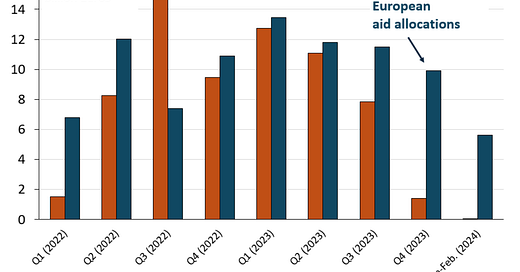



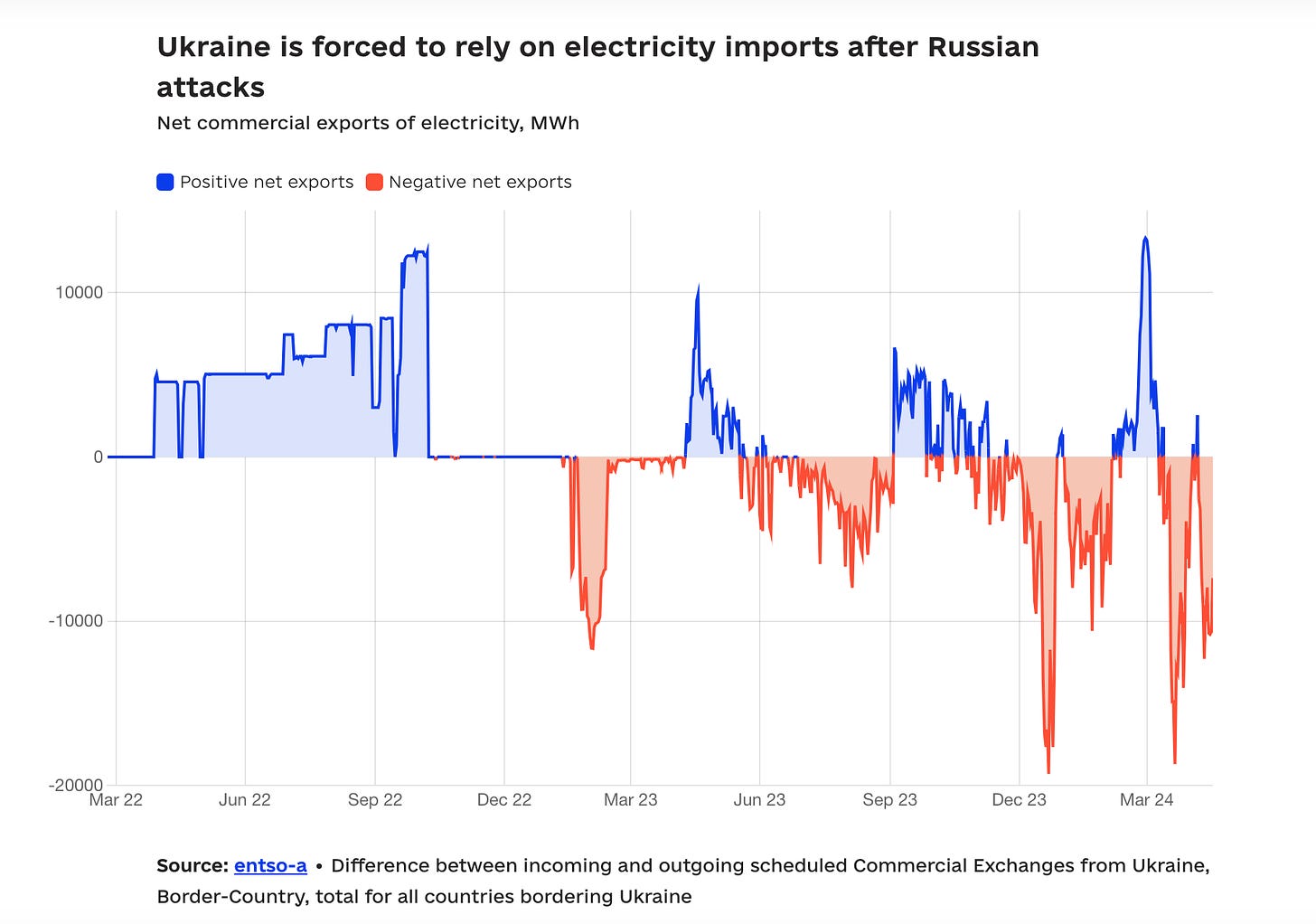
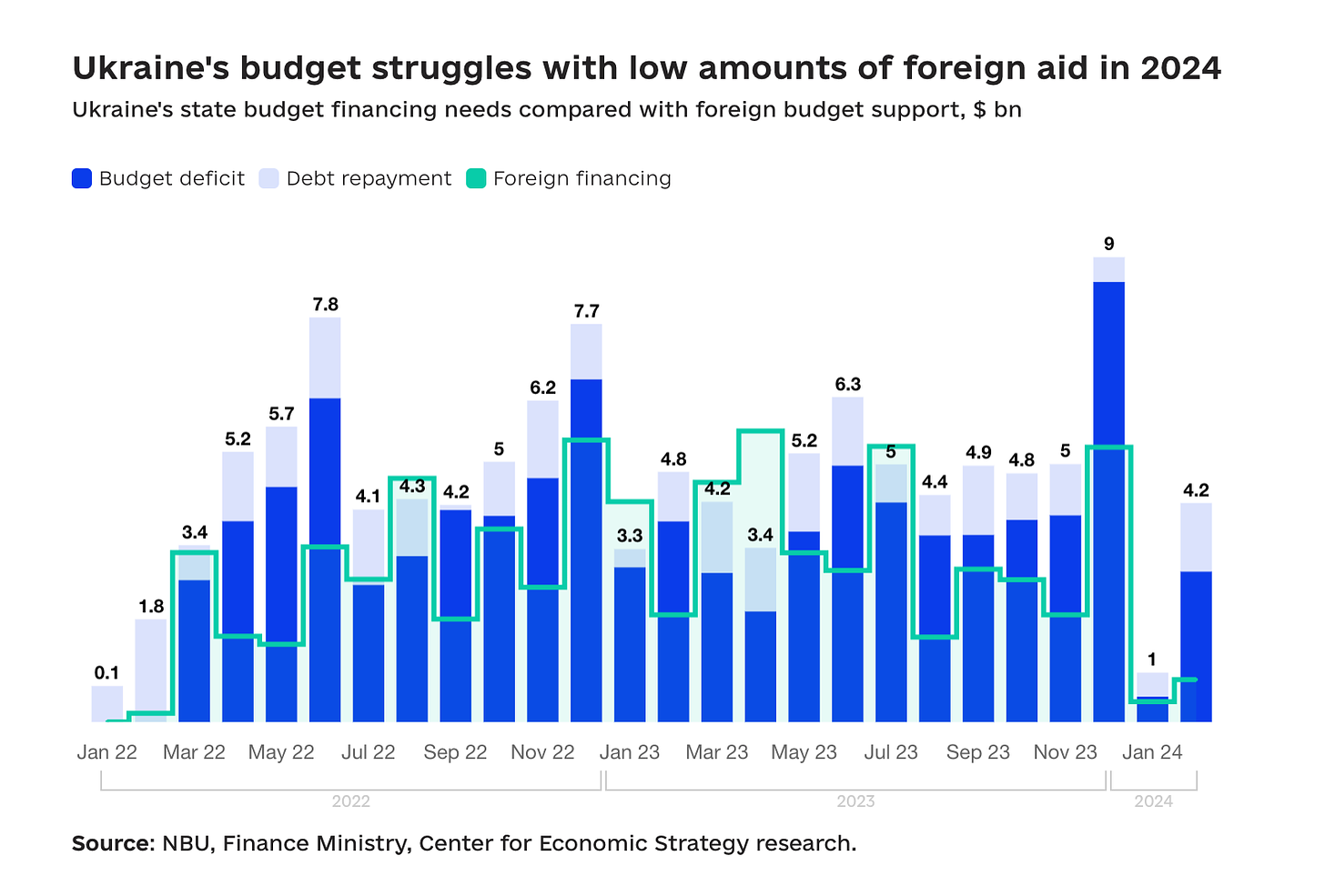
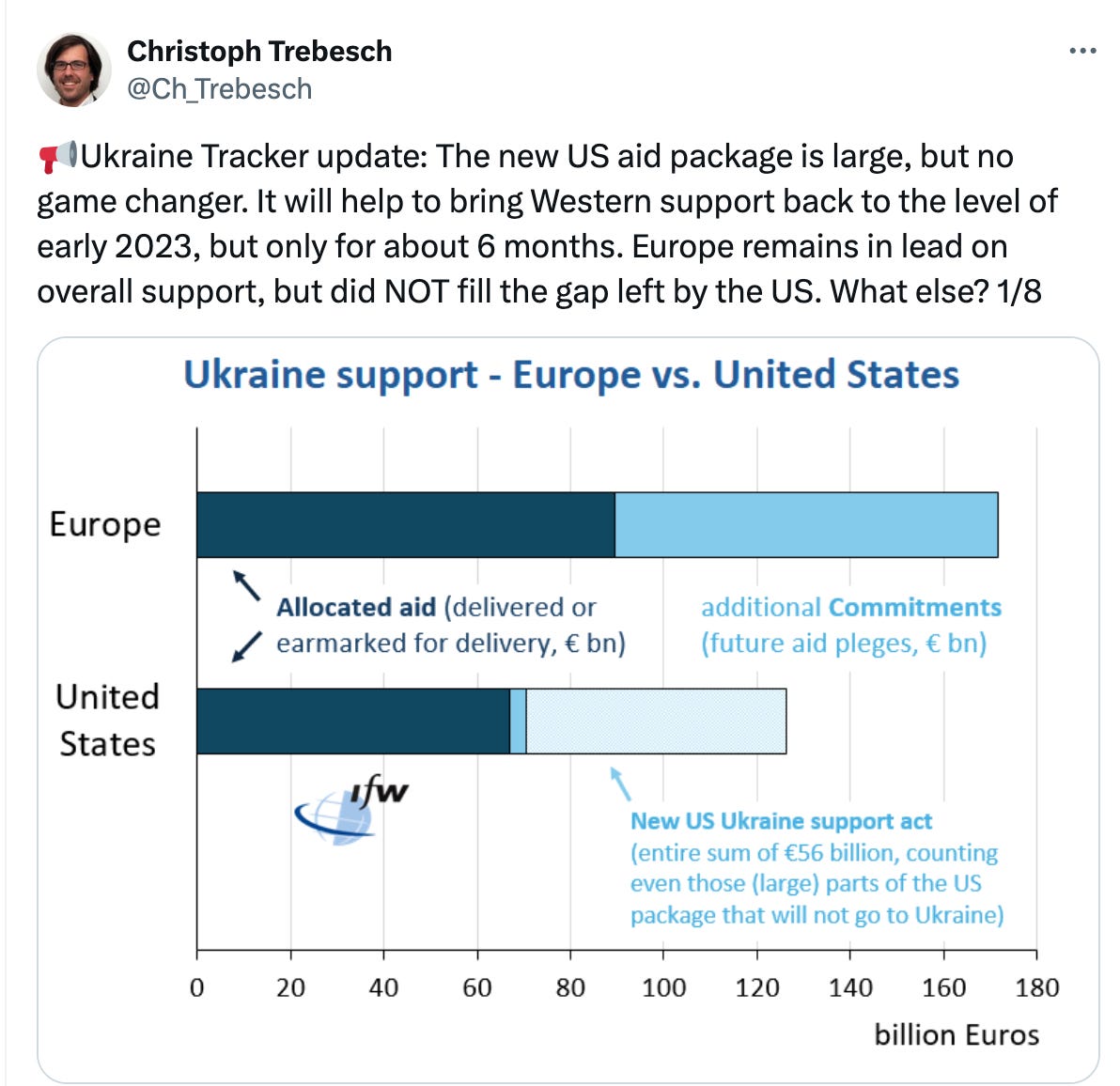
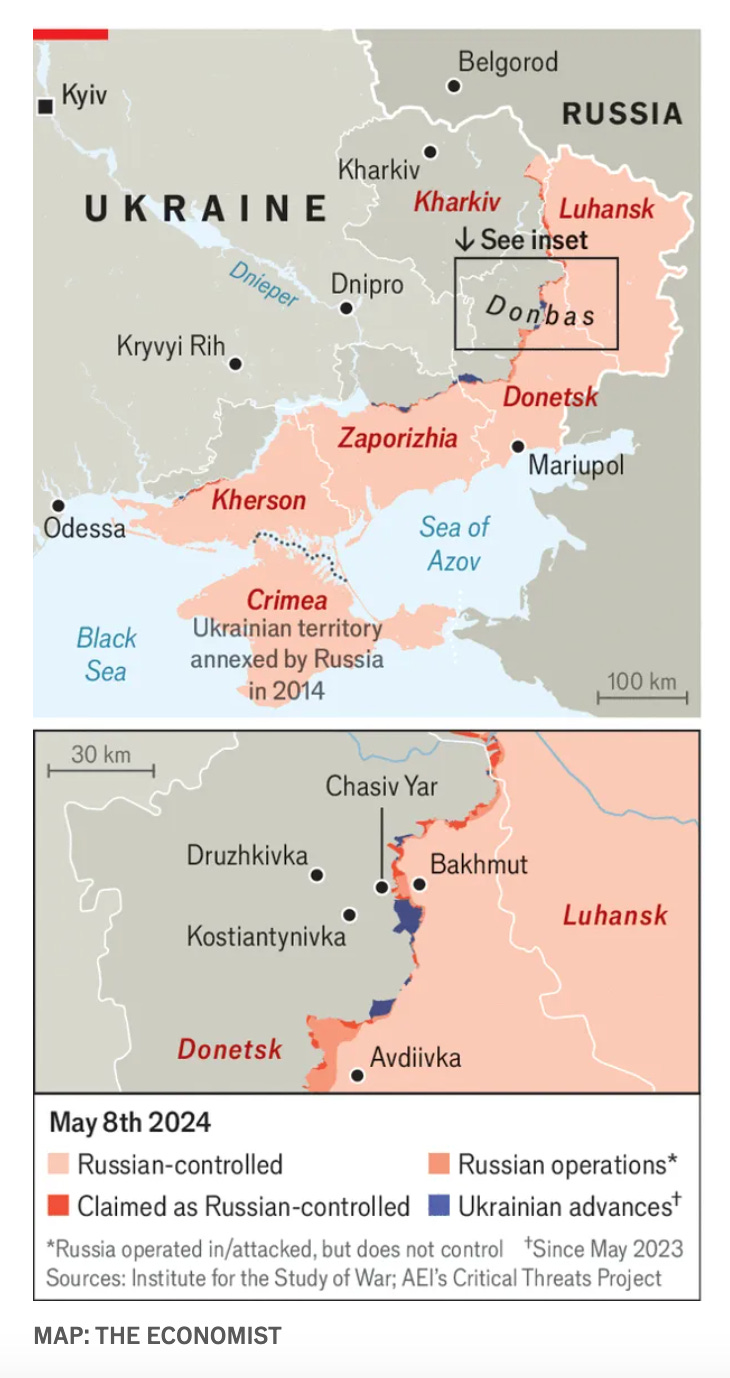
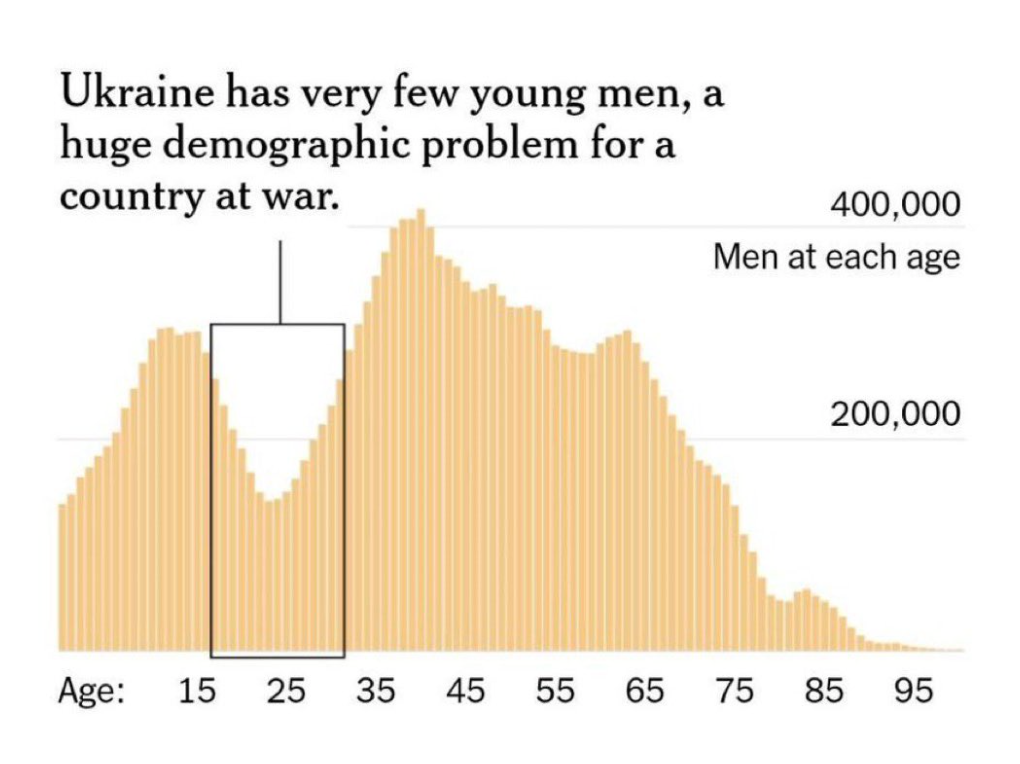
Adam,
No offense, but do you have any background in combat arms ?
as a former ACR(Armored Cav Regiment) NCO, all the media, arm chair general numbers, metrics, general narratives are fine but not material when it comes to large scale combined arms ground combat power.
To actually change the balance of the war there is a requirement which is:
A)building of a NCO core, command leadership up to brigade/regiment level grounded in AirLand Battle Doctrine (Ukraine version)
https://www.armyupress.army.mil/journals/military-review/online-exclusive/2023-ole/returning-context-to-our-doctrine/#:~:text=The%20doctrine%20provided%20a%20central,victory%20that%20drove%20how%20all
B) Building that force while integrating across combined combat arms domains is whats necessary to build large scale mobile combat power.
C) Also, nobody has Air dominance and it doesn't look like Russian Air Force Command is working to generate it, they are focused on SEAD not the full Suppression and Destruction of Enemy Air Defenses (SEAD/DEAD) cycle
D) to control, dictate the pace, scale & mass, movement across large scale Battlespace (measured in 1000s of grid squares) is the measure of dominance in the fight in Ukraine
E) Ukraine Ground Forces have been building defense in depth, fortifications, lines of support..& are also transforming their SEAD/DEAD
F) This "Russian breakthrough", predicted since the invasion is not a capability that Russian Land Forces have in mass, leadership, support, sustainment, combined arms
G) Basically every metric the Russians don't have a ability to create a breakthrough much less exploit one at scale 40-80,000 forces across grid squares (100s)
H) Ukraine at this time has the second or third most battle tested capable land force on earth
I) The idea that Ukraine should "sue for peace" after 26+ months of the highest kinetic warfare in Europe since 1945 & 10yrs of fighting Russian forces and having given up less then 10% of new Ukrainian territory since the invasion doesn't make logic
J) I'm missing the logic of why Ukraine should give up and what settlement with Russia would generate a result that would be different then any of the last 20yrs with Russia ?
K) Everyone seems to want the fighting to stop but offer zero on how to enforce the settlement with deterrence necessary vs. Russia to enforce it
L) There seems to be after 2+yrs in the media, academic, general discourse a very weak understanding of how actual things work across
battle doctrine, sustainment, force development, composition, employment, combat leadership/ NCO & leader development, Air-land power relationships, combined arms combat power, synchronizing of forces across multi-domain planning, the whole C6ISR cycle, Theater/Corps level area planning & all concepts in the defensive/ offensive force dynamics & deployment
Oh, congrats, you are repeating what Mearscheimer has been saying since June 2023. Tad too late, no?